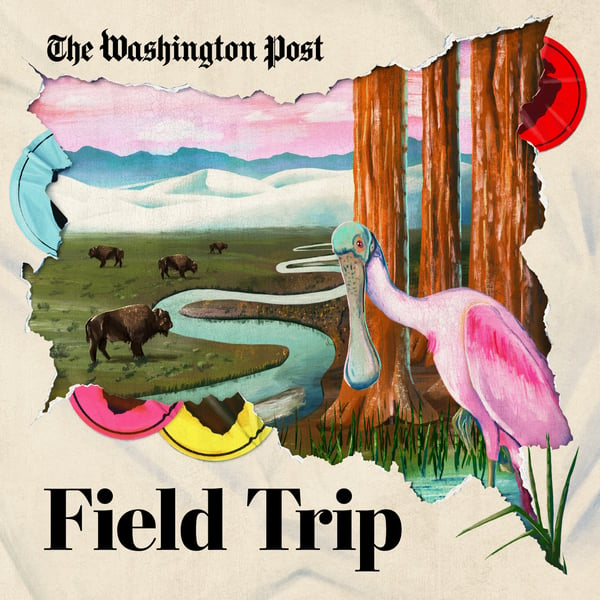Gates of the Arctic National Park
Field Trip
The Washington Post
4.6 • 976 Ratings
🗓️ 19 July 2023
⏱️ 61 minutes
🧾️ Download transcript
Summary
Established in 1980, Gates of the Arctic marked a radically different way of thinking about what a national park should be. Compared to previously established parks, it’s hard for the public to access. This park is truly undeveloped — there are no roads or infrastructure. And it’s immense. You could fit Yosemite, Glacier, Everglades, White Sands, Death Valley and the Grand Canyon all within its borders and still have room to spare.
But even here, in one of the most remote and least visited of the national parks, the outside world is finding its way in.
Ten miles west of the park, mining companies are drilling for copper. The metal is necessary for a number of green technologies, including electric vehicles, solar panels and wind turbines. The mines could support President Biden’s goals to reduce the use of fossil fuels and beef up domestic sources of critical minerals.
To access these mines, the state has proposed an access road that would cut through 211 miles of Arctic tundra. Twenty-six miles of the road would cross through Gates of the Arctic. Biden has pledged to conserve nearly a third of U.S. land and water by 2030, and his administration has stopped similar mining projects. Environmentalists and some Native groups are also fighting to have the wilderness preserved.
In this episode of “Field Trip,” Washington post reporter Lillian Cunningham travels north of the Arctic Circle to ask: Is the dent these metals would put in climate change worth the harm to the surrounding wilderness?
We have incredible photos for this series. You can see them and find more on the National Parks here.
“Field Trip” would not have been possible without the support of Washington Post subscribers. If you’re not yet a subscriber, you can unlock a special deal as a listener to this series. Your first four weeks are free when you sign up here.
Transcript
Click on a timestamp to play from that location
| 0:18.0 | The scene is The seaplane that brought me here just flew away. It left me in rain and fog by a lake surrounded by spruce trees in one of the most remote parts of Alaska, north of the Arctic Circle. |
| 0:39.0 | I thought I was going to feel like a little more, |
| 0:42.0 | I don't know, nervous or something to like |
| 0:46.2 | see the planes take off and know we're here all by ourselves, but it actually just feels really cool. It's a beautiful feeling. |
| 0:57.0 | It does cause panic in some people though. |
| 1:08.0 | Panic because that seaplane is our lifeline. For us, there's no other way in or out. |
| 1:11.0 | There's not a single road, there's not even a hiking trail. It's |
| 1:17.4 | very different from any of the national parks I've been to before. This is Gates of the Arctic National Park and Preserve, |
| 1:28.9 | and it's 8.5 million acres of pure wild land. |
| 1:38.1 | One thing I notice after only a few minutes |
| 1:41.7 | is that my hearing has started to change. Instead of filtering out |
| 1:47.8 | noise I'm searching for sound. |
| 2:02.0 | A bird call, the rain falling on the soft tundra. |
| 2:04.0 | Somehow it's like the vastness actually makes it |
| 2:08.0 | easier to notice the details. |
| 2:19.6 | Right now it's early September, also known as Peak Fall, and the foliage of the Tundra is electric, deep purple, bright yellow, cranberry red, sea foam green. |
| 2:27.0 | And this on top here, this lichen is called caribou moss, this white stuff. That's what the karibu really like. |
| 2:34.0 | This is John Gedake, a wilderness guide. |
| 2:37.0 | He is also a major advocate for protecting this land. |
| 2:41.4 | From what? Well, I'll get into that soon. |
| 2:45.0 | John looks like he could stand here all day. He has a thick yellow raincoat on but he doesn't have the hood up. His shoulders are |
| 2:56.0 | relaxed. He makes it look of his year in Fairbanks |
... |
Please login to see the full transcript.
Disclaimer: The podcast and artwork embedded on this page are from The Washington Post, and are the property of its owner and not affiliated with or endorsed by Tapesearch.
Generated transcripts are the property of The Washington Post and are distributed freely under the Fair Use doctrine. Transcripts generated by Tapesearch are not guaranteed to be accurate.
Copyright © Tapesearch 2025.

